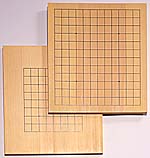 |
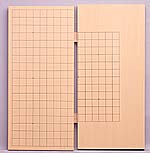 |
| A practice board, 9x9 on one side and 13x13 on the other. | A slotted board |
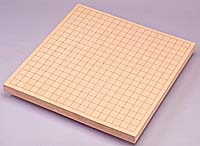 |
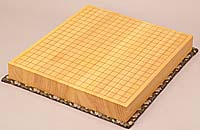 |
| A one-sun board | A two-sun board. |
| The Go board |
| Thin boards | |
| These days Go is often played sitting down at a table. Thin boards that are convenient to use and tidy away are popular. They are made of various different materials, such as paper, rubber, and wood, and there are also smaller boards, such as 9x9 and 13x13, for practice. |
 |
 |
| A practice board, 9x9 on one side and 13x13 on the other. | A slotted board |
 |
 |
| A one-sun board | A two-sun board. |
| *Note: One sun is about 3.03 cm. |
| Boards with legs | |
| The best Go boards are boards with legs that suit Japanese-style rooms. Of course, they are made of wood. Actually, since long ago a great variety of woods have been used for Go boards. The main woods used now are kaya (Japanese nutmeg) and katsura. However, boards made out of choice wood are becoming rarer every year, and it is very difficult to acquire a really fine board. The wood that, above all others, is suited to Go boards is kaya. It has just the right resilience, beautiful grain and colour and a fragrant odour -- all these make it number one. Moreover, as you use it, the colour settles into a quiet, refined amber, giving it an inexpressible elegance. |
| Standard measurements of the Go board |
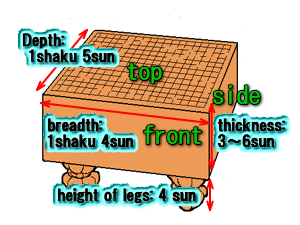 |
| You can evaluate a Go board from its front. The main point is the cut of the wood. |
| See "Cutting the wood" |